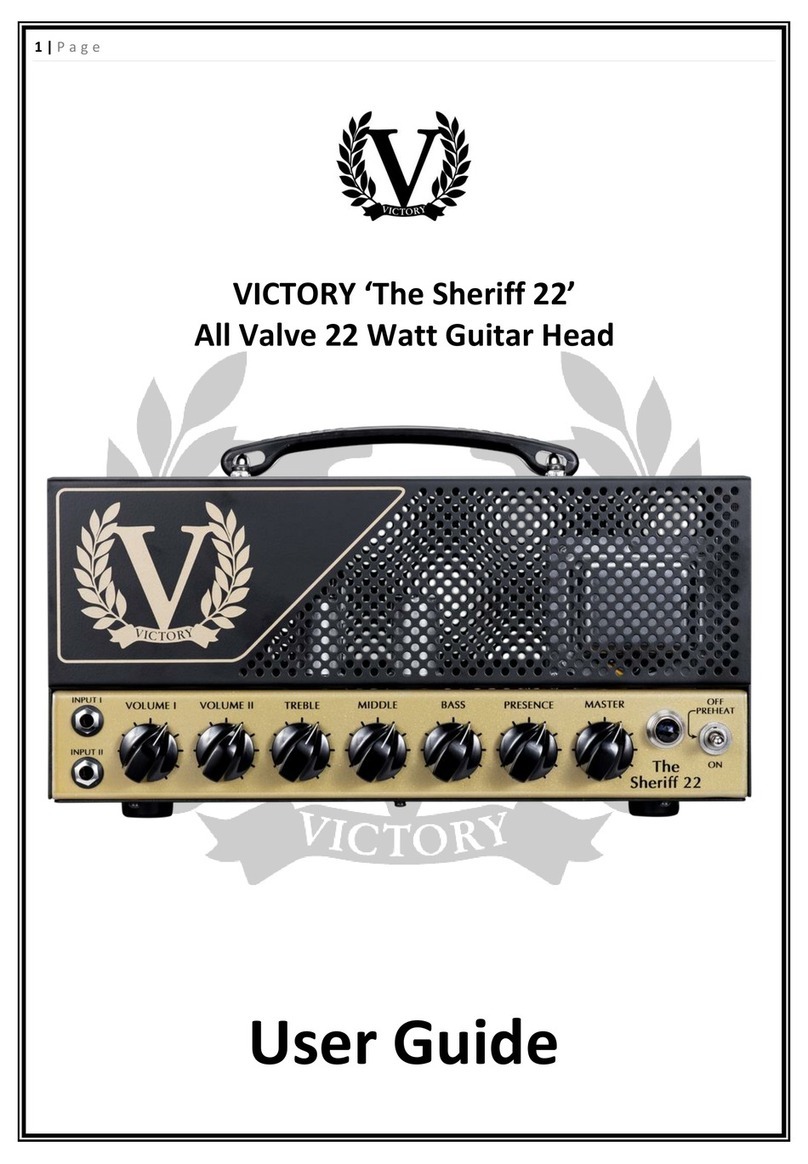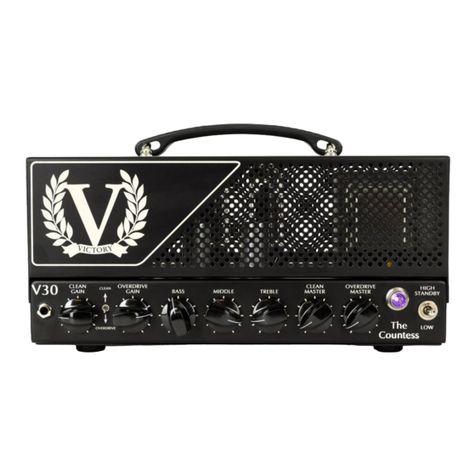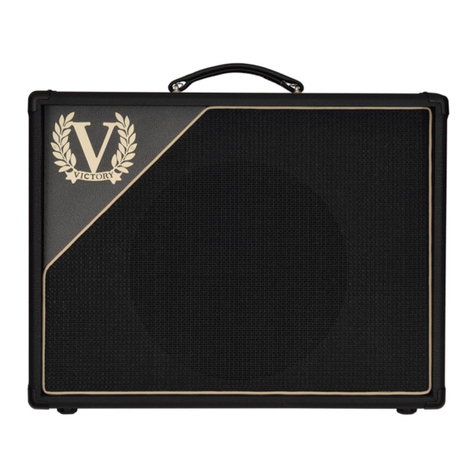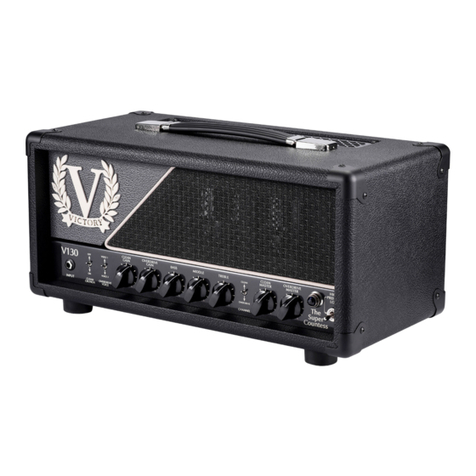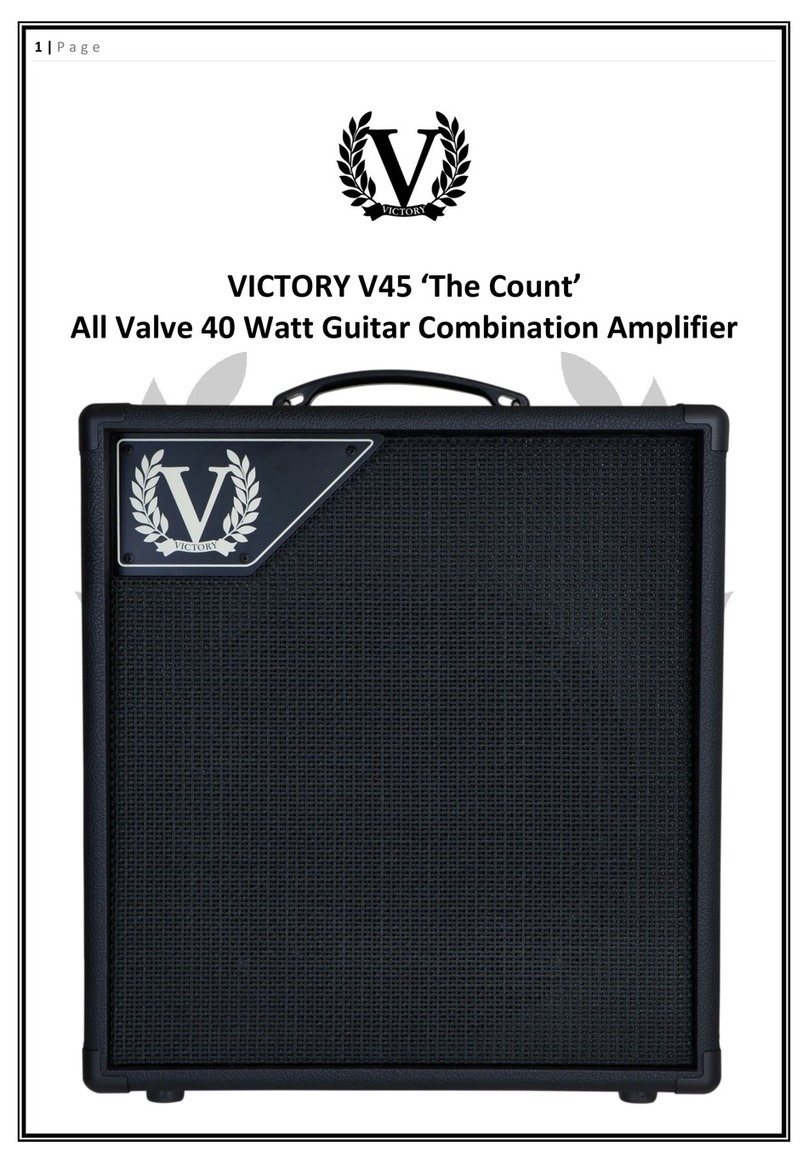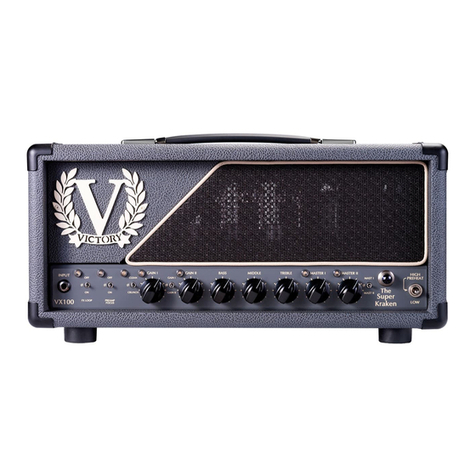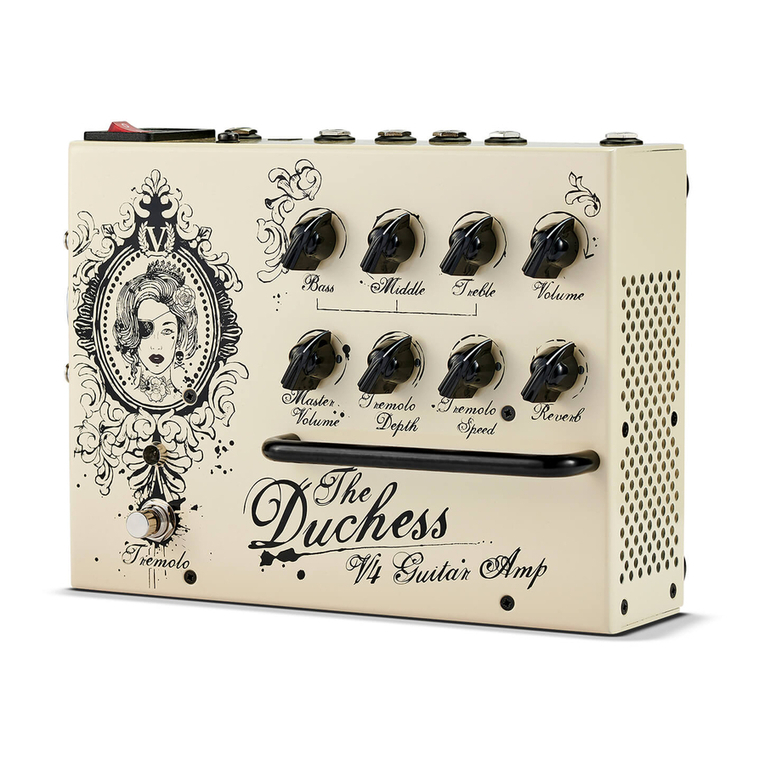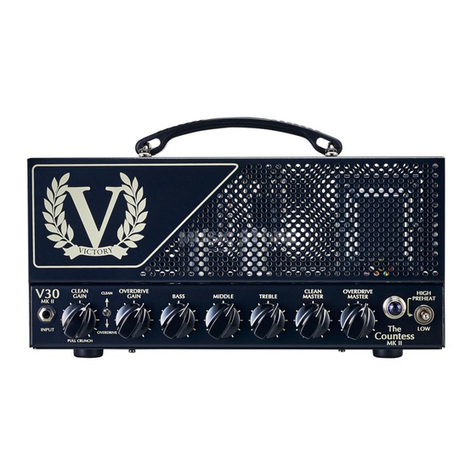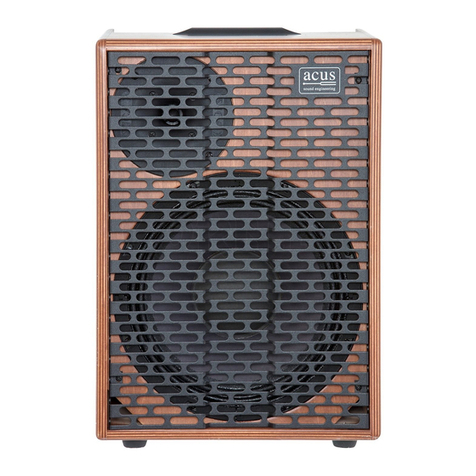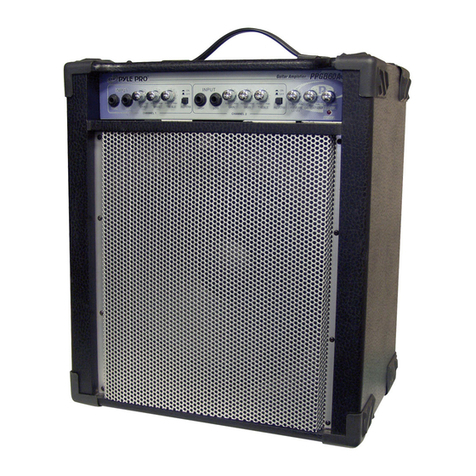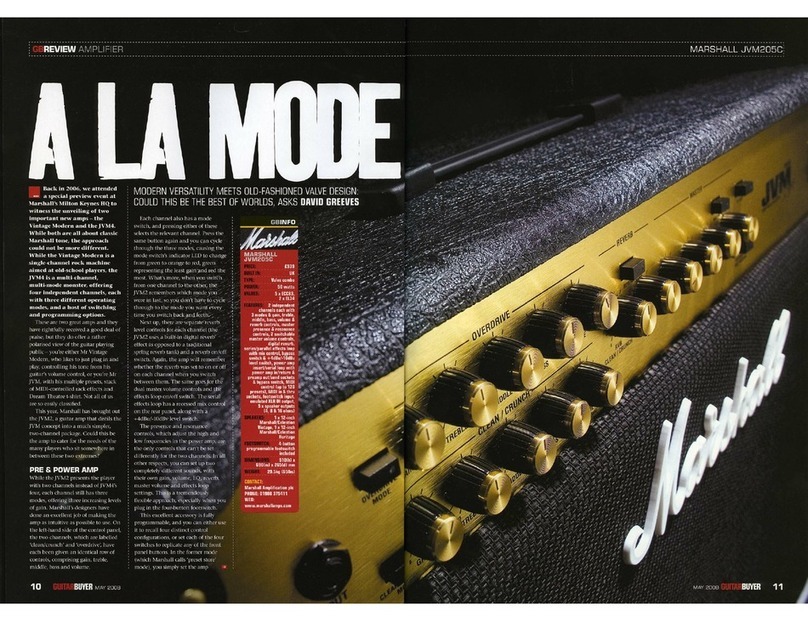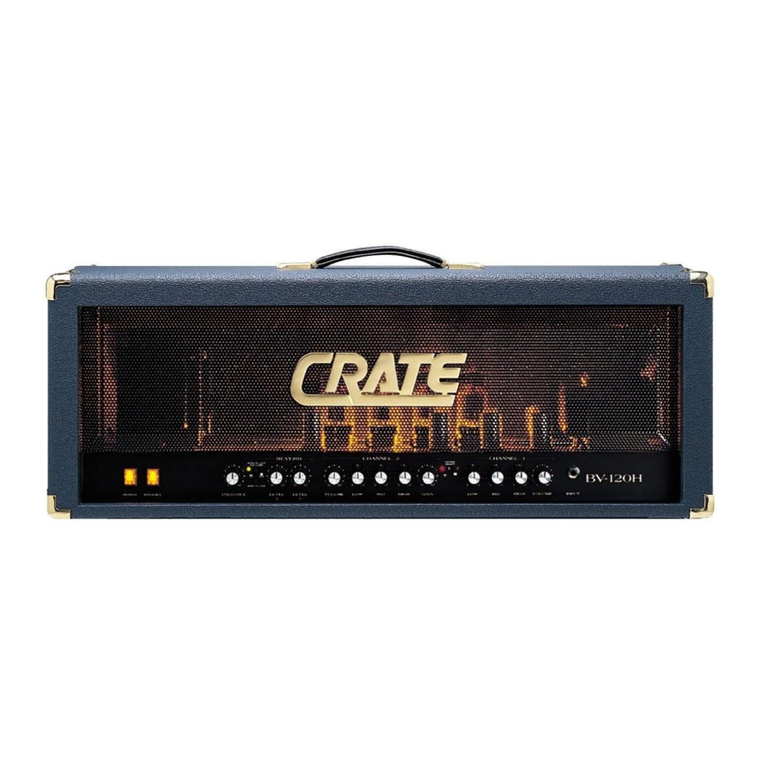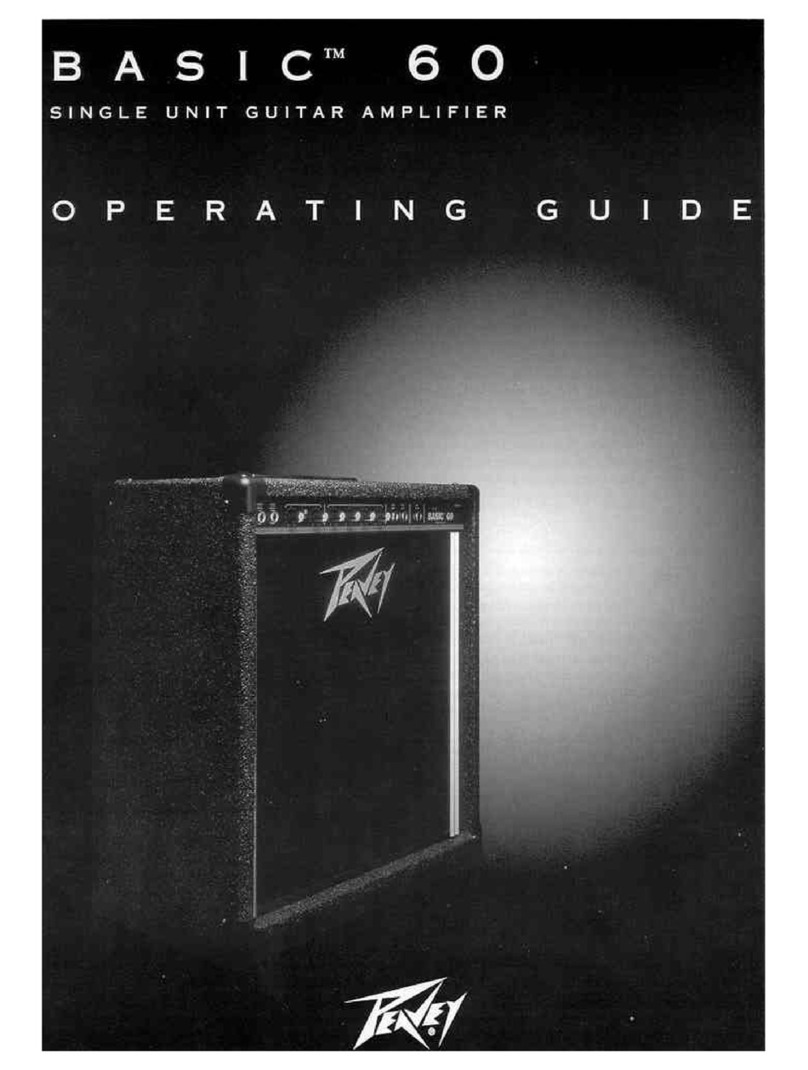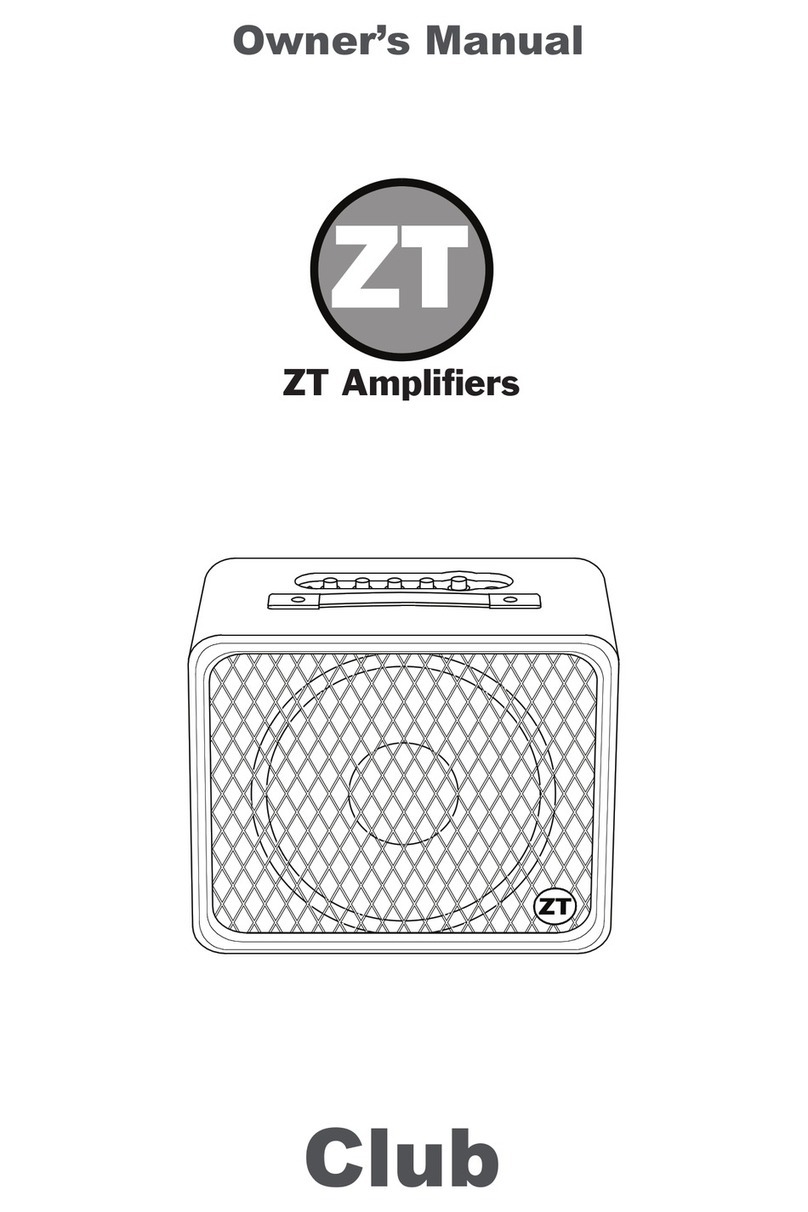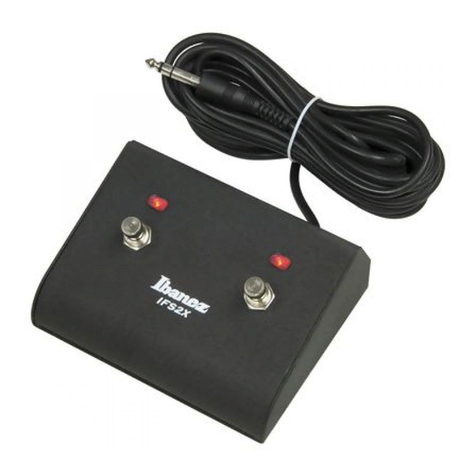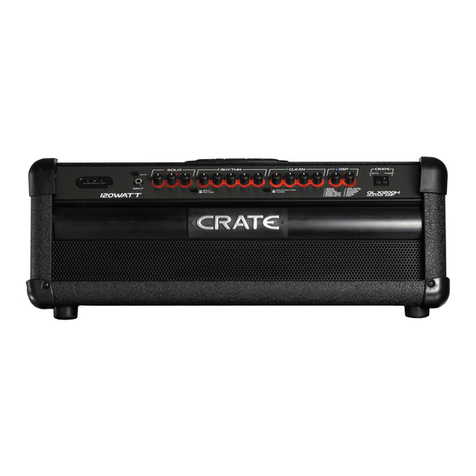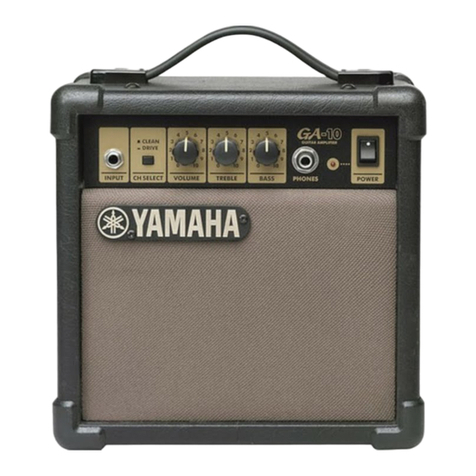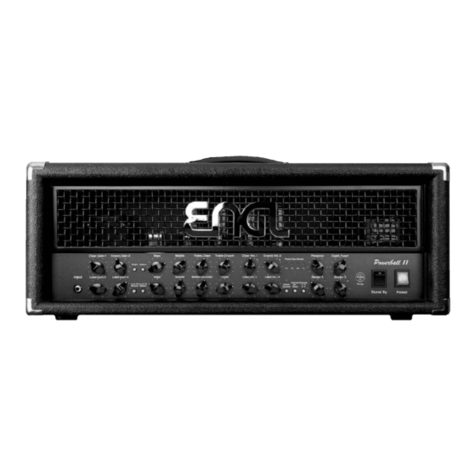Always ensure a speaker is connected to the amplifier before powering up or damage to
the output transformer may result. Never unplug a speaker when the amplifier is ON as
this is even more likely to damage the transformer and the output valves.
The output transformer in the Sheriff 44 has 3 separate secondary windings; a 16 Ohm, an
8 Ohm and a 4 Ohm. This makes it easy to connect many different combinations of
speakers. There are five speaker output jacks: 1 x 16 ohms, 2 x 8 ohms, (wired in parallel),
2 x 4 ohms, (wired in parallel).
So here are all the possible combinations:
1. For a single 4 Ohm cabinet, use either of the 4 Ohm sockets.
2. For a single 8 Ohm cabinet, use either of the 8 Ohm sockets.
3. For a single 16 Ohm cabinet, use the 16 Ohm socket.
4. For a pair of 8 Ohm cabinets, use both of the 4 Ohm sockets
5. For a pair of 16 Ohm cabinets, use both of the 8 Ohm sockets.
FX LOOP
The Sheriff 44 has an effects loop, which is a simple, low impedance, series loop. This will
not add any noise, gain or volume to your signal so if you experience such changes when
using an effect pedal, they will be caused by that effect.
The SEND socket is for connection to the input of effects units. On the 44 it is a lower
impedance version of the signal that appears at the INPUT. Use the send to connect to
floor pedals or rack effects such as Delay, Chorus and Reverb etc. Effects such as
Overdrive, Fuzz, Wah Wah and Tuners often give better results plugged into the
Instrument Input on the front panel. The Send socket can also be used on its own to send
a signal to another amplifier.
The RETURN socket is for connection to the output of effects units. When not used it is
internally connected to the SEND, therefore the EFFECTS LOOP can be ignored if not in
use. It can also be used as a small signal ‘Slave’ input from another amplifier but DO NOT
plug an amplifier’s speaker output into the Return socket or very bad things will happen.
The RETURN socket is also very useful for fault diagnosis. If your 44 doesn’t produce any
sound, (or makes unusual noises) when played, plug the guitar directly into the RETURN
socket and play. This bypasses the entire pre-amplifier section and sends the guitar signal
through just the output stage. If sound is now heard, (or the unusual noises have gone)
then the problem is in the pre-amp section and is likely to be a faulty pre-amp valve.
The switch between the SEND & RETURN sockets turns the FX LOOP ON and OFF for true
bypass.
Amplifier Dimensions:
SIZE (mm): 480(w) x 235(h) x 235(d) Unboxed. 610(w) x 340(h) x 345(d) Boxed.
Weight: 12.5Kgs Unboxed. 14.75Kgs Boxed
